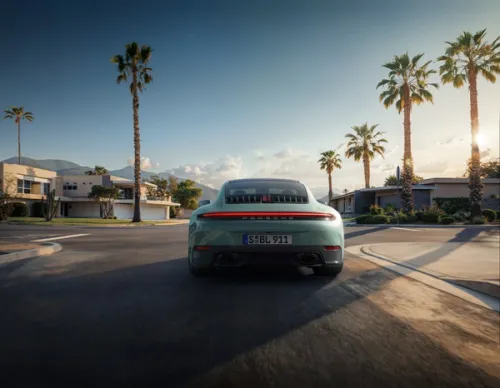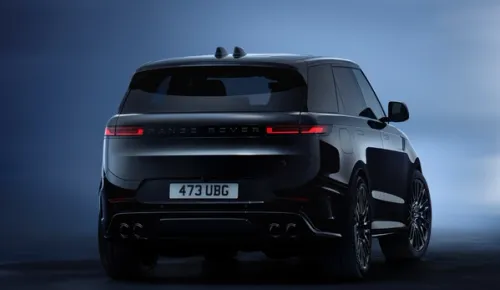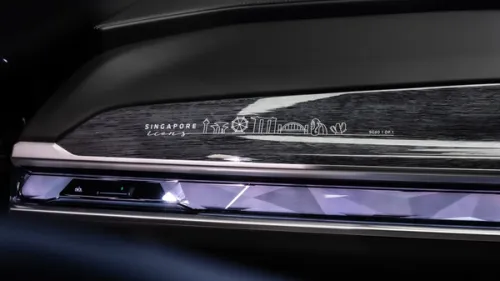First Look: CITROËN DS3 R3
In addition to its official participation in WRC, where it has won five FIA World Championship Constructors’ titles, Citroën Racing has always offered products designed for customers.


The French manufacturer has now furthered this rich tradition by designing Citroën DS3 R3, which is set to make its rallying debut at the end of 2010. Versatile, high performance and yet affordably-priced, DS3 R3 aims to become the new leader in its category.
Based on the new Group R3T regulations drawn up by the FIA, DS3 R3 features the same structural design and appearance as the production model. The production steel body shell has been reinforced with a welded, multi-point roll cage, improving the resilience of the chassis and safety for the driver pairing.
The bonnet conceals a four-cylinder 1.6-litre THP (high pressure turbo) engine, which has been developed using the PSA production engine. Specific racing parts (air box, camshaft, pistons, connecting rods, exhaust and turbo systems, electronic unit, etc.) have been deployed to boost the car’s power to a healthy 210bhp. In addition to its pure power, special attention has been given to increasing the engine’s torque to improve traction, one of the key factors in delivering efficient driving performance. With 350Nm, the DS3 R3 engine offers unrivalled flexibility on the road.
DS3 R3 has benefitted from the extensive expertise acquired by Citroën Racing through its involvement in the World Rally Championship. As with C4 WRC, the six-speed gearbox features semiautomatic sequential control. This device enables gear changes to be made twice as quickly as with a manual gearbox, whilst also improving the reliability of the car’s powertrain.
The suspension system uses the very latest technologies and has been designed to be used on all road surfaces, from rough gravel to smooth tarmac. A wide variety of setup options are available, allowing DS3 R3 to be adapted to all driving styles.
Citroën Racing has deployed its extensive expertise in passive safety and chassis rigidity on DS3 R3. The standard monocoque chassis is lighter because it does not have the supports used on the production model. It has been re-welded and fitted with a multipoint roll cage made of over 45 metres of steel tubing. The industrially designed roll cage is preassembled outside the car, which means the welding is of a higher quality. Various details of the chassis design, such as the harness cross-member and the door crossbars, help to improve safety for the driver pairing. The monocoque chassis is delivered with all the brackets and mountings required to assemble the car, which reduces the construction time and cost.
In order to improve weight distribution, the battery and automatic fire extinguisher are positioned behind the seats. A steel skidplate protects the underside of the engine and also helps to lower the car’s centre of gravity. The flexible, FIA-homologated fuel tank remains in its original position.
DS3 R3’s efficiency on all road surfaces stems from the quality of its suspension system, designed to make full use of the group R regulations. At the front, the production sub-frame has been altered so that tubular wishbones can be fitted. The axle is both lighter and stronger than on the production model. Developed in conjunction with BOS, the shock absorbers boast several innovative features:
- The aluminium struts are lubricated in an oil bath, which improves the consistency and lifespan of the suspension.
- The lower, frontally-offset anchor point helps increase the travel and the guiding length of the shock absorber.
In order to adapt its road handling to all driving styles, DS3 R3 offers a variety of setup options: threetrack shock absorbers (low- and high-speed compression and rebound, adjustable hydraulic bump stop), camber and toe (front and rear), track width and castor (front).
At the rear, the production cross-member has been reinforced and altered to make it easier to fit the anti-roll bar. The removable rear wheel hubs allow the camber and toe settings to be adjusted independently.
The braking system features a ‘pedal box’ assembly with two master cylinders. The discs are held in place by four-calliper pistons at the front and two-calliper pistons at the rear. The handbrake is hydraulic.
For the first time ever, Citroën Racing has produced a customer-racing product fitted with a turbocharged engine. The experience acquired by the brand in WRC for almost ten years has been put to good use in its design. The 1.6-litre THP (high pressure turbo) engine is very closely related to the production model used throughout the PSA group. Fitted with a regulation-compliant 29mm turbo flange, it develops 210bhp of power and generates a torque of 350Nm (with commercially available fuel). This second value improves traction and delivers excellent versatility at all engine speeds.
One of the main innovations on DS3 R3 concerns its gearbox. For the first time, a customer-racing product has been fitted with a semi-automatic gearbox, which reduces the time spent changing gears and increases reliability. The electronic management system only authorizes gear changes when the engine parameters allow it. Once again, the expertise developed by Citroën Racing in WRC enabled this cutting-edge technology to be adapted to DS3 R3.
Inside the cabin, the composite fibre steering wheel-mounted paddles are just as ergonomic as on C4 WRC: the driver flicks the paddle backwards to move up the gears and flicks it forwards to move down the gears. The clutch pedal is still present, but is only used to drive off. During subsequent gear changes, the clutch is automatically controlled.
Credits: wilswong


Get the Best Price for your used car
from 500+ dealers in 24 hours

- Convenient and Hassle-Free
- Consumer Protection
Transparent Process
With No Obligation








